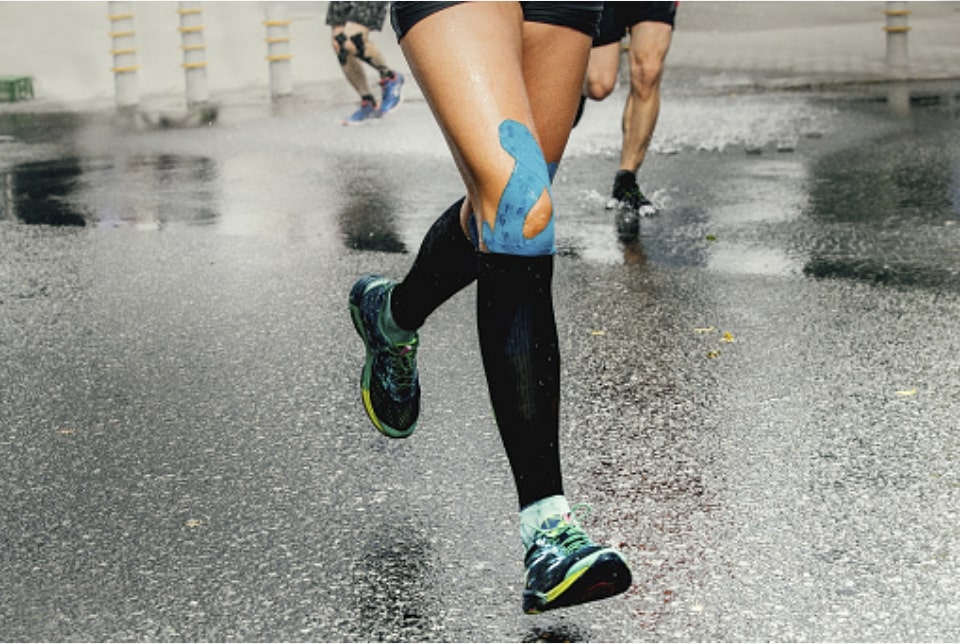Many runners suffer from knee pain after their jog. Research shows that the knee is most often where many of us get running-related injuries. However, running isn’t bad for your knees, as some myths say. Numerous studies have identified that runners have lower rates of knee osteoarthritis than sedentary people, and running can help ward off these knee issues.
One of these studies stated: “Increasing evidence indicates that exercise training can improve pain, stiffness, joint dysfunction, and muscle weakness in patients with knee osteoarthritis.”
But what if you’re experiencing knee pain when running? It could be caused by overuse, poor running mechanics, bad shoes or weaknesses somewhere else in the body. Here are some of the most common causes of a runner’s knee and how to protect and recover from it.
Sore Knees After Running
It’s frustrating to have injuries, and many runners often wonder if they’ll ever run again once they get injuries or pain in their knees. Thankfully, knee problems shouldn’t keep you from running for long.
Check out some of the most common types of knee injuries so runners can quickly identify and understand how to prevent and recover from them:
- Runner’s Knee
Runner’s knee feels like pain under the kneecap that feels worse after running or when walking up or down stairs. When the kneecap moves out of alignment when running, the cartilage beneath becomes irritated.
Runners can prevent this pain with three main practices: strength training, using the foam roller daily and shortening the stride to take pressure off the knees when running. The recommended goal is 170-180 foot strikes per minute. To treat a runner’s knee, it is recommended by professionals to reduce the amount of mileage, cross-train with activities that don’t antagonize the knee, and apply ice for 15 minutes five times each day. Anti-inflammatory medication and exercising with a foam roll on the quads may help. However, if the pain continues, it’s best to see a doctor. - Patellar Tendinitis
Patellar tendonitis is a bit different and includes pain below your kneecap at the top of the shin. The pain usually increases or sharpens when running. It also hurts when moving up and down the stairs. This pain occurs when the force on the knee during running puts too much strain on the patellar tendon.
Treating the patellar tendinitis requires halting running until it’s not painful. Instead, cross-train and apply ice for 15 minutes five times a day. Patellar tendon straps can also help reduce pain, but if the pain persists, see a doctor. However, to avoid the issue, make sure to strength train, stretch the quads and hamstrings and use a foam roller daily. - Iliotibial Band Syndrome
This knee occurs when pain occurs on the outside of the knee. The iliotibial band (ITB) lies from the hip to the knee and crosses the knee joint. A fluid-filled sac named the bursa rests between the ITB and the outside of the femur, near the knee. When this ITB is tight, the bursa becomes squeezed and causes pain. It generally is felt five minutes into a run and stops when runners finish their jog.
To treat the ITB injury, runners should use a foam roller on the ITB near the soft part of the outer thigh. Runners can continue to run unless the pain forces a change in form. It’s best to reduce mileage and include cross-training exercises. If runners overpronate, it’s best to wear motion-control shoes. Preventing this injury includes maintaining strong glute and core muscles, using a foam roller daily and running in shorter, quicker strides, with 170-180 foot strikes per minute being a good pace. - Knee Osteoarthritis
Knee osteoarthritis is identified when pain, swelling, stiffness or tightness happens in your knee during running or everyday activities. The wear and tear of the lining of the joint cause the bones to grind together.
It’s important to treat it by continuing to move and actively keeping the joints lubricated. Runners can take anti-inflammatory medication and run on soft surfaces. Like all other knee injuries, it’s best to see a doctor if the pain persists. The best way to prevent knee osteoarthritis? Build up a safe set of strength training exercises.







